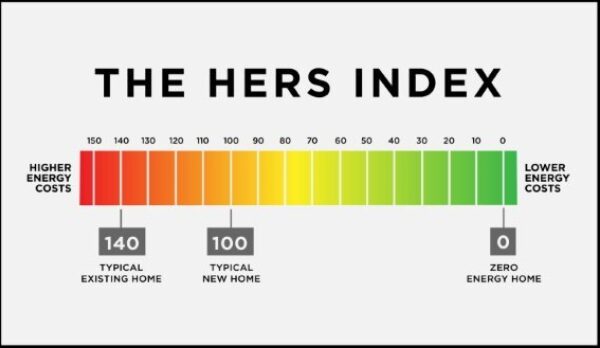The 2023 Stretch Code Update: a Year of Lessons Learned
December 14th, 2023
In December 2022, I published “Massachusetts Stretch Code Update: Three Key Takeaways” on Epsilon’s Knowledge Center to present what I thought were the most significant changes in the 2023 Stretch Code update. Now that Epsilon and many of our partners have had a year to work on projects subject to the Stretch Code update, it is an opportune time to reflect upon how the Stretch Code changes are impacting our projects, and what we’ve learned along the way.
Both the original and this article are specific to the Commercial Code, something I failed to mention in my previous article, which led to some confusion. I’ve edited that article for clarity on the matter. Find the original article here.
Code Requirement 1: The Envelope Calculation
The Issue
How does this impact our projects?
Permitting takes place early in the design process. Most buildings are typically not far enough along in design to be able to accurately calculate the envelope performance. This code requirement forces design teams to make assumptions early in the process that must be carried through design development. While final envelope values may change slightly, they should not be changed so much as to bring the envelope out of compliance with the requirement, and should be actively reviewed by the design team as the project moves toward construction.
Cost?
Time. Architects need time to arrive at these assumptions while testing and running costs on multiple options with the owner.
Code Requirement 2: Electrification
The Issue
The electrification of building systems has been on the horizon for years. Carbon emissions from buildings that employ electric space heating and hot water will fall over time as the electric grid adds clean energy sources. With the Stretch Code update space heating must be all-electric for highly glazed buildings, and partially electric for high ventilation buildings (e.g., laboratory buildings). For multi-family residential projects, the options include enhanced thermal energy demand intensity (TEDI) requirements, Passive House certification, or demonstrating a low HERS rating. While not technically a requirement, electrification is the main way projects will achieve the performance required by the Stretch Code Update.

How does this impact our projects?
MassSave Passive House incentives take the sting out of the added cost of Passive House certification. Where this requirement hurts most is on the multi-family residential projects located in communities not served by MassSave (towns with municipal utility providers), including Braintree, Holyoke, Taunton, and others. These projects need to achieve certified performance standards or advanced thermal performance, often at a significant cost premium, without the help of incentives.
Cost?
Without incentives, the added cost may be too much for some projects to absorb.
Code Requirement 3: Electric Vehicle-Ready
The Issue
The new code requires that the following electric vehicle-ready (EV-ready) spaces be provided:
- Group R and B occupancies: 20%
- All other occupancy types: 10%
How does this impact our projects?
Some large projects may have parking for a thousand vehicles or more. While providing the conduit and wiring for 200+ future EV charging spaces sounds daunting, the greater concern is demonstrating sufficient electrical capacity to supply these future spaces. In other words, you must have sufficient power to your project to serve all future EV charging spaces at the time of construction.
Cost?
The load from the future EV charging stations coupled with electric space heating systems may add substantial cost due to the increased electrical service required for the project. Additional transformers and panels coupled with the electric service capacity could have significant cost impact on a project.
In Summary
Government, industry, and communities alike are working on ways to reduce greenhouse gas emissions in response to the climate crisis. The Massachusetts Stretch Code Update codifies carbon reduction measures that most developers had previously chosen to forgo due to the added costs. Now that these measures are prescriptive requirements, the added costs are unavoidable.
The Stretch Code Update brings the Commonwealth closer to its goal of net-zero carbon emissions by 2050. As is the case with most large changes, it will take time for the industry to fully adapt to the new cost of doing business in Massachusetts.
Have questions? Please reach out. Epsilon's team of permitting experts have the answers.
Epsilon’s team of planners provide developers, owners, design teams, and OPMs a full range of environmental permitting services, including Article 80, Massachusetts Environmental Policy Act (MEPA), and Chapter 91. Our teams offer wetland delineation services, environmental justice compliance, sound level measurements and air dispersion analysis, and historic preservation consulting support as well.
Learn More:
See the full Commercial Stretch Code update language here:
https://www.mass.gov/doc/225-c...
DOER Stretch Code 2023 Technical Guidance:
https://www.mass.gov/doc/2023-stretch-code-technical-guidance-document-main-text/download
See also in our Knowledge Center:
Massachusetts Stretch Code Update (Dec 2022): Three Key Takeaways
Don’t Forget About the GHG Self-Certification Process
2 Harbor Street Project in Boston’s Seaport Receives Final Approval from BPDA
Reviewing Veterans Affordable Housing Projects